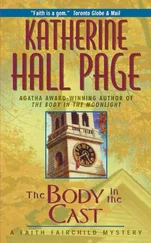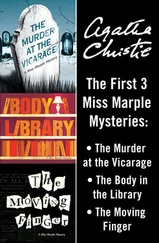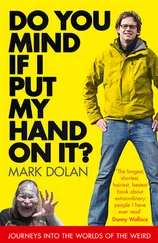Robert Monroe - Journeys out of the body, Practical Guidebook
Здесь есть возможность читать онлайн «Robert Monroe - Journeys out of the body, Practical Guidebook» весь текст электронной книги совершенно бесплатно (целиком полную версию без сокращений). В некоторых случаях можно слушать аудио, скачать через торрент в формате fb2 и присутствует краткое содержание. Жанр: Старинная литература, на английском языке. Описание произведения, (предисловие) а так же отзывы посетителей доступны на портале библиотеки ЛибКат.
- Название:Journeys out of the body, Practical Guidebook
- Автор:
- Жанр:
- Год:неизвестен
- ISBN:нет данных
- Рейтинг книги:5 / 5. Голосов: 1
-
Избранное:Добавить в избранное
- Отзывы:
-
Ваша оценка:
- 100
- 1
- 2
- 3
- 4
- 5
Journeys out of the body, Practical Guidebook: краткое содержание, описание и аннотация
Предлагаем к чтению аннотацию, описание, краткое содержание или предисловие (зависит от того, что написал сам автор книги «Journeys out of the body, Practical Guidebook»). Если вы не нашли необходимую информацию о книге — напишите в комментариях, мы постараемся отыскать её.
Journeys out of the body, Practical Guidebook — читать онлайн бесплатно полную книгу (весь текст) целиком
Ниже представлен текст книги, разбитый по страницам. Система сохранения места последней прочитанной страницы, позволяет с удобством читать онлайн бесплатно книгу «Journeys out of the body, Practical Guidebook», без необходимости каждый раз заново искать на чём Вы остановились. Поставьте закладку, и сможете в любой момент перейти на страницу, на которой закончили чтение.
Интервал:
Закладка:
• Excessive haste while creating vision although in the majority of cases vision appears naturally.
• While concentrating on the hands to create vision, doing so at an excessive distance versus the recommended four to six inches.
• Forgetting about the techniques for “maintaining” while in contact with living objects.
• Forgetting to shut the eyes or defocusing vision when translocating through walls or other solid objects.
• Desiring to do something superhuman in the phase without the required internal desire and confidence.
• Fear of experiencing pain in the phase instead of learning to control it.
• Observing moral standards in the phase when they do not apply.
• A tendency to immediately use the phase for something practical instead of first thoroughly exploring and interacting with the surroundings.
Exercises for Chapter 8
Questions
1. Are there skills in the phase that must first be mastered before the phase may be used to its full extent?
2. Is it possible to understand whether a phase is intact by attempting to fly?
3. Has a practitioner most likely gotten up in the phase or in reality if there are doubts about this?
4. Is it sufficient to think about the body in order to return to it, and is it only required to return into the body in order to control it?
5. Which arm should be actively and aggressively moved to overcome sleep paralysis?
6. Is it possible to tell jokes to oneself to overcome sleep paralysis?
7. Is it possible to move the physical eyes while in the phase?
8. What should be done if sleep paralysis cannot be overcome?
9. Can sleep paralysis occur without practicing the phase?
10. What if fear is not addressed and conquered?
11. Is it possible to gradually master the phase in order to overcome fear?
12. Is there cause for fear of anything in the phase?
13. At what point can vision be created in the phase by opening the eyelids and not through the use of special techniques?
14. What would happen with an attempt to open the eyes after sitting up in bed, i.e., before becoming completely separated from the phase?
15. Why may contact with living objects in the phase cause a return to the body?
16. What problems might occur if a practitioner studies the mouth of a talking object?
17. In the phase, how quickly can small text be read?
18. Which is easier to read in the phase: text in a newspaper or text on a large billboard?
19. Is it possible to see hieroglyphs instead of text while reading in the phase?
20. Is it possible to burst through a wall after running up to it with the eyes shut?
21. Which muscles of the body must be tensed to start flying in the phase?
22. Are there any extrasensory abilities that are inaccessible in the phase?
23. Can a practitioner transform into a ball while in the phase?
24. How does pain in the phase differ from pain in the physical world?
25. Should a practitioner give up a seat to an elderly person while in the phase?
26. Due to moral considerations, what is prohibited in the phase?
Tasks
1. During your next phase session, walk around your home investigating the rooms, kitchen, and bathroom in detail.
2. Learn to pass through walls. Completely dedicate one long phase experience to perfecting this skill.
3. Learn to fly in the phase.
4. While in a deep phase, learn to control pain by hitting a wall with your fist.
5. While in the phase, learn telekinesis (the ability to move objects by thought) and pyrokinesis (setting objects on fire, also performed by thought).
6. Dedicate a lengthy phase experience to an experiment with vision: create it if it is not already available, and then shut your eyes and recreate vision. Do this at least ten times over the course of a single phase
7. Get objects in the phase to start talking.
8. Dedicate a long phase to searching for different kinds of texts in order to experiment with reading various size fonts.
Chapter 9 - Translocation and Finding Objects
THE ESSENCE OF TRANSLOCATION
AND FINDING OBJECTS
Like everyday reality, the phase space cannot be used for certain purposes if it is not known how to move around and find necessary things. In a wakeful state, it is more or less known where something is located and how to reach it. In the phase the same assumptions cannot apply since phase mechanisms work by different principles.
The reason for addressing translocation and finding objects in the same chapter is because both techniques rely on the same mechanics that make the existence of these techniques possible. In other words, the same methods - with minor exceptions - can be applied to both translocation and finding.
After studying the techniques described in this chapter, a practitioner in the phase will be able to go to any location and find any object. The only limitations that exist are those of the imagination and desire; if these are unlimited, so are the possibilities.
Regarding translocation, attention should not be focused on methods for travelling through nearby spaces. For example, a practitioner may simply walk into an adjacent room, or out to the street via the corridor or through the window. These are natural, easy actions. A practitioner should instead concentrate attention on how to move to remote destinations that cannot be quickly reached by physical means.
It is important to mention the necessary safety procedures for translocation. Sometimes, due to a lack of experience, a practitioner may mistake the phase for reality, and reality may be mistaken for the phase. Mistaking the phase for reality implies no danger since a practitioner simply believes that an entry attempt was unsuccessful.
However, if reality is mistaken for the phase, a practitioner may perform dangerous or even life-threatening actions. For example, after getting out of bed in a wakeful state, thinking that everything is happening in the phase, a beginner may approach a window and jump out of it, expecting to fly, as is customary in the phase. For this reason alone, shortcuts to flight should only be taken after gaining a level of experience that makes it possible to unambiguously distinguish the phase from a wakeful state.
If a glitch occurs when practicing translocation techniques (for example, landing in the wrong place), a practitioner should simply repeat the technique until the desired result is obtained. Either way, initial training is a must in order to make everything easier for you later on.
As far as object-finding techniques are concerned, these are used for both inanimate and animate objects. In other words, these techniques are equally effective for finding, for example, a person or a utensil. However, there are several techniques that are only suitable for finding living objects.
BASIC PROPERTY OF THE PHASE SPACE
All methods for controlling the phase space stem from a primary law: the degree of changeability of the phase space is inversely proportionate to the depth of the phase and the stability of its objects.
That is, the deeper and more stable the phase, the more difficult it is to perform something unusual in it because in a deep, stable phase, the laws of it begin to closely resemble those of the physical world.
All translocation and finding objects techniques are based on the knowledge of methods that bypass the primary law. The secret lies in the fact that not only phase depth affects the controllability of the phase, but so does phase stability, which in turn depends to a large extent on the number of sensations experienced in the phase. The techniques for translocation and finding objects are used when these experienced sensations are weakened through certain actions.
Читать дальшеИнтервал:
Закладка:
Похожие книги на «Journeys out of the body, Practical Guidebook»
Представляем Вашему вниманию похожие книги на «Journeys out of the body, Practical Guidebook» списком для выбора. Мы отобрали схожую по названию и смыслу литературу в надежде предоставить читателям больше вариантов отыскать новые, интересные, ещё непрочитанные произведения.
Обсуждение, отзывы о книге «Journeys out of the body, Practical Guidebook» и просто собственные мнения читателей. Оставьте ваши комментарии, напишите, что Вы думаете о произведении, его смысле или главных героях. Укажите что конкретно понравилось, а что нет, и почему Вы так считаете.










